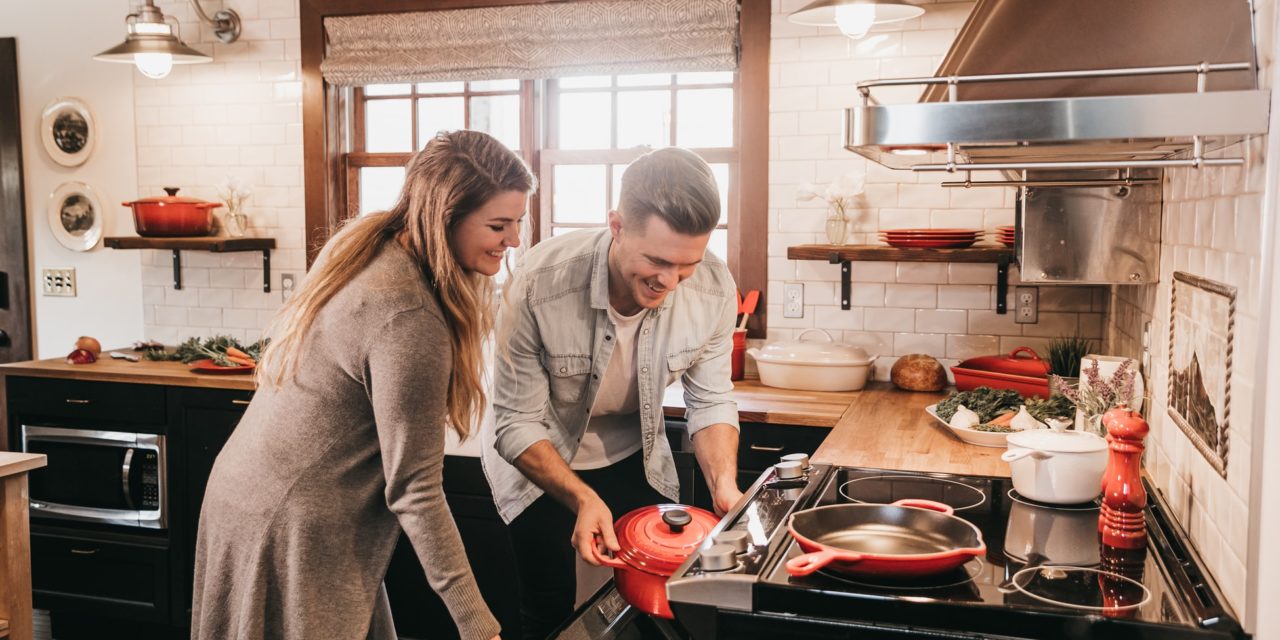[ad_1]
Cooking vegetables correctly does not have to be a guessing situation. By following a few simple directions, you can insure that your fresh or frozen vegetables will turn out tasty, appealing and cooked to perfection every time.
Cooking Fresh Vegetables
To cook fresh vegetables, place the vegetables in a pan that is almost completely full once vegetables are inserted. When cooking with waterless cookware, cooking vegetables in too large a pan for the quantity you are cooking can be a problem. Then rinse your vegetables with cold water and pour the excess water off. The water that clings to the vegetables plus the vegetable's own natural moisture will provide enough moisture for cooking the waterless way.
Cover the pan, close the vent and cook over medium-low heat. When the cover spins freely on a cushion of water, the vapor seal has formed. Cook according to the time chart that follows: Do not peek. Doing so not only lengthens the cooking time but also increases the risk of burning your vegetables because the vapor seal is broken. When finished cooking, test for doneness with a fork. If not done, cover the pan, close the vent and add 2 to 3 Tbsp. of water to the rim to reestablish the vapor seal. Cook over low heat for 5 to 10 minutes.
Cooking Frozen Vegetables
Do not defrost the vegetables. Again the size of pan used for cooking the vegetables is important. Once the vegetables have been placed in the pan, your pan should be almost completely full. Rinse your vegetables with cold water and pour the excess water off. The water that clings to the vegetables plus its own natural moisture will provide enough moisture for cooking.
Cover the pan, close the vent and cook over medium-low heat. When the cover spins freely on a cushion of water, the vapor seal has formed. Cook according to the time chart. Do not peek. Removing the cover will destroy the vapor seal, lengthen the cooking time, and possibly cause the vegetables to burn.
Cooking Times for Vegetables:
Artichokes (whole) (30 to 45)
Artichoke hearts (10 to 15)
Asparagus (10 to 15)
Beans, green (fresh, cut) (15 to 20)
Beans, green (fresh, French cut) (10 to 15)
Beans, green (frozen) (10 to 12)
Beans, Lima (fresh) (30 to 35)
Beans, Lima (frozen) (10 to 12)
Beets (whole) (35 to 40)
Broccoli (15 to 20)
Brussels Sprouts (15 to 20)
Cabbage, shredded (10 to 15)
Carrots, sliced (15 to 20)
Cauliflower (10 to 15)
Corn (fresh) (15 to 20)
Corn (frozen) (10 to 12)
Eggplant (5 to 8)
Greens (10 to 12)
Leeks (12 to 15)
Mushrooms (5 to 10)
Okra (15 to 20)
Onions (whole) (15 to 20)
Parsnips (sliced) (15 to 20)
Peas (frozen) (5 to 7)
Potatoes (quartered) (20 to 25)
Potatoes (whole) (30 to 35)
Potatoes, sweet (30 to 35)
Spinach (frozen) (8 to 10)
Spinach (fresh) (15 to 20)
Squash, summer (yellow) 15 to 20)
Squash, winter (25 to 30)
Squash, zucchini (20 to 25)
Tomatoes (10 to 15)
Turnips and rutabagas (25 to 30)
*Cooking times reflect the time after the vapor seal is formed, which usually takes 3 to 5 minutes. Note: To keep your vegetables hot and ready to serve, keep the cover on and the vent closed. The vegetables will stay hot in the pan for about 20 to 25 minutes.
Don't let the concept of cooking waterless scare you. When you try it, you will soon discover how easy it is to actually use waterless cookware if you follow the above principles. Yes, cooking with waterless cookware is healthy because vegetables cook in their own natural juices, but you will soon discover how tasty and uniquely flavorful your prepared meals actually are. The Gourmets Cookware offers a wide variety of quality waterless stainless steel products along with tips and healthy recipes that can be easily adapted to your waterless cookware.
[ad_2]
Source by Marcia Klun


